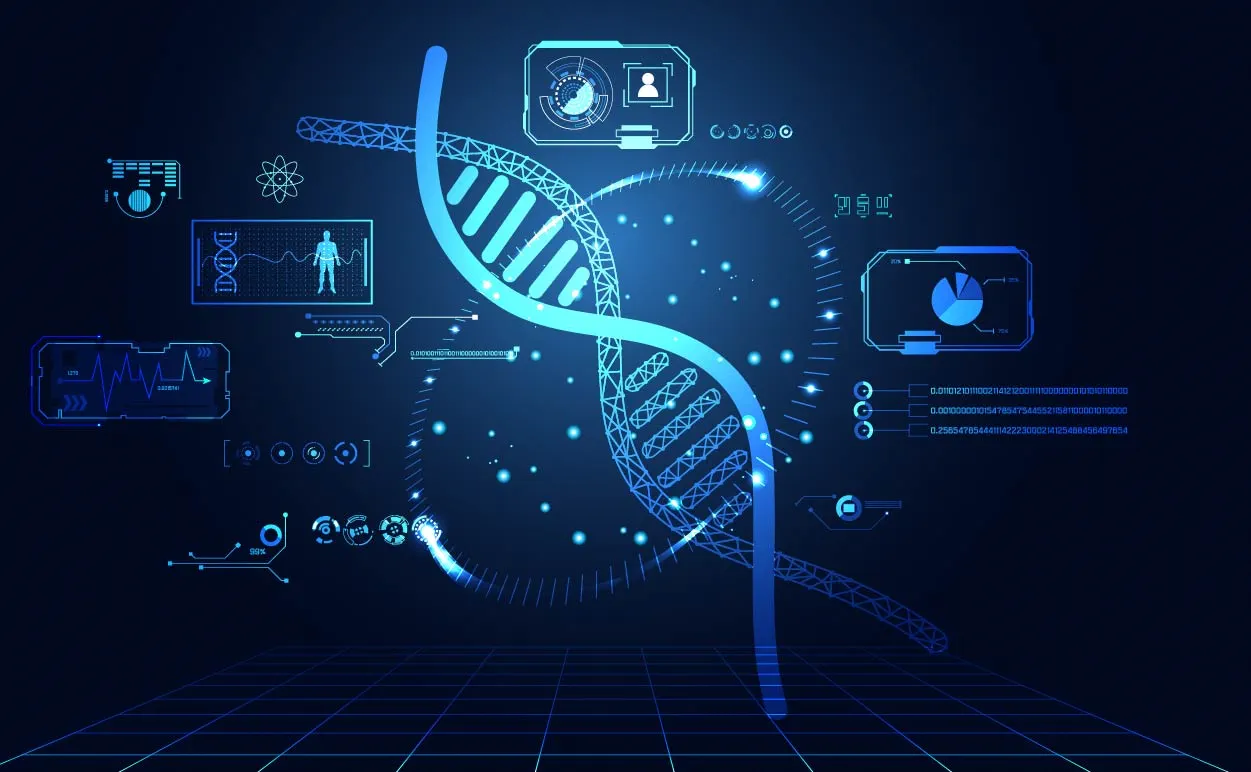
Over the last few years, AI has moved from the realm of science fiction to a tangible technology that dramatically reshapes the healthcare sector.
Here’s a closer look at some of the ways in which AI helps the major stakeholders of the caregiving paradigm to produce significant improvements for patient outcomes.
Healthcare providers
The constant mutating of diseases and viruses presents a great challenge for healthcare providers. But with the help of AI, the diagnosis and treatment processes would be significantly accelerated. AI has been statistically proven to be more accurate in detecting diseases from medical imaging and therefore reckoned a viable source of diagnostic information for clinicians [1].
Recently, a group of researchers at a hospital in Washington D.C. have developed an application powered by machine learning (ML) and natural language processing (NLP) for diagnosing genetic conditions in children. The application allows doctors to feed a photo of a baby's face to an algorithm, which would look at facial landmarks, the size of the nose, etc., to determine if a genetic condition is present [2].
The high workload is attributable to the healthcare sector and a recognised factor affecting the quality of care and patient outcomes. Apart from expertise-related work, clinicians are also burdened by administrative tasks. In fact, according to the American Medical Association, an estimate of 30% of doctors' time are spent to enter patient information into electronic health records (EHRs). Natural language processing (NLP) can free doctors from such workload and allow them to administer care more attentively by quickly extracting information from EHRs [3].
The back office
The back office is in charge of the operational nuts and bolts that keep a healthcare facility running. Compared to clinical use cases, integrating AI into the administrative side of healthcare might not sound glamorous. But there is a massive opportunity for AI to systemise and streamline back-office activities. For instance, NLP can automate workflow for administrative documentation, including the digital creation of patient-case summaries and transcripts. Thanks to AI, administrative staff are free from tedious tasks and can devote more time to higher-value ones.
Another area of hospital operation where AI can thrive is bed management. Bed occupancy is a crucial determinant of quality care. No patient wants to wait hours for a bed or has their surgery postponed due to lack of bed space. ML leverages relevant data to predict the length of stay, patient arrivals, and total bed census, hence, ensuring optimal bed allocation. Initiated by the NHS, the COVID-19 Capacity Planning and System is being piloted at four hospitals in England to help the organisation predict the demand for ICU beds and ventilators.
Pharmaceutical companies
Pharmaceutical companies are already getting their feet wet in the field of AI. Notably, AI can help these firms to accelerate the drug development process. It is daunting to identify potential products from the massive repository of synthetic and theoretical drug banks. But now, AI algorithms can predict the impact of a drug even before it is tested. In 2019, a Canadian company got echoing headlines from several news outlets for using AI to identify a potential drug candidate for Wilson's disease [4]. Hailed as the "first-ever AI-discovered therapeutic candidate", the treatment triggered a flurry of excitement in the drug development world and smooths the path of applying AI in the pharmaceutical industry.
AI is also conducive to realising new applications for the existing drug catalogue of pharmaceutical firms. With its ability to spot patterns within large datasets that aren’t so apparent to human researchers, AI is useful for associating possible connections between drugs and ailments and identifying new uses for drugs that are already on the market.
Health insurers
AI can also cure what ails health insurance. Health insurers are responsible for verifying the accuracy of the claims – a process usually ties down hundreds of employees and is susceptible to human errors. A McKinsey study revealed that 80% of submitted claims are potentially incorrect or fraudulent [5]. That means a tsunami of claims must be reviewed by experts. By embedding AI in this cumbersome process, health insurers can rely on algorithms to detect anomalies in seconds.
Something to keep in mind
Healthcare facilities need to be aware that technologies such as ML and NLP still require some degree of human oversight. A Harvard Business Review survey reveals that people are more comfortable with medical AI if a physician remains responsible for the ultimate decision [6]. Therefore, any treatment or diagnosis recommendations proposed by AI should always be assessed by licensed doctors. Along with that, medical care organisations should be willing to invest in the IT infrastructure to ensure the technologies operate properly and yield favourable outcomes.
It should be noted that every technology revolution sparks a grave concern about the extent of AI-led job loss. But history bears witness to the job-creating potential of new technologies. AI will soon take over all rules-based and mundane tasks, and perform them even better than humans. However, at the same time, AI will create new job opportunities for those with adequate digital skills. Healthcare organisations need to be ready for this paradigm shift by involving the workforce in the early stages of AI adoption and up-skilling them.
The healthcare sector is ripe for change. There are countless opportunities where AI can enhance clinical workflows, improve hospital operations, and elevate patient care.






























